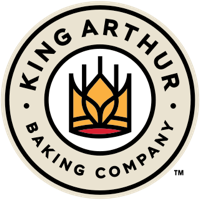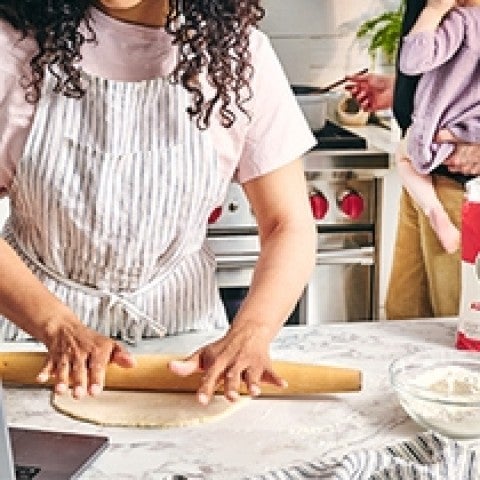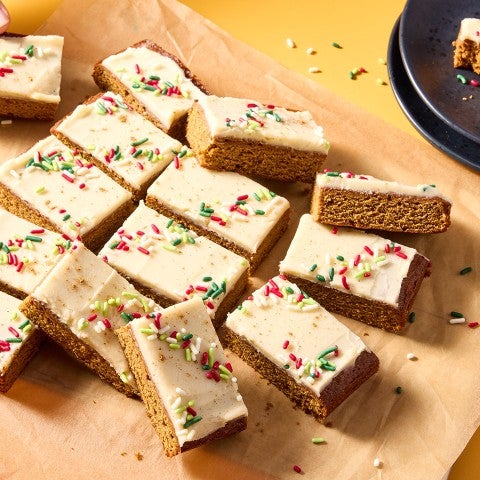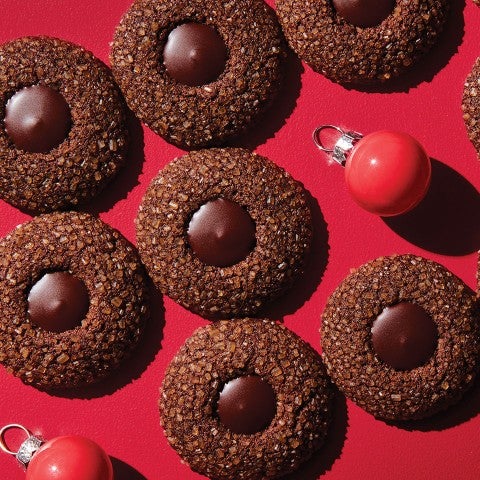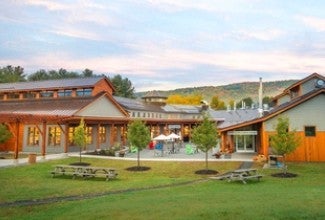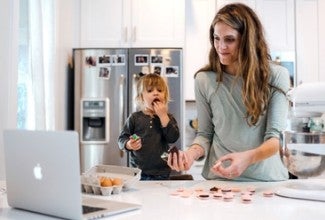A deep dive into pizza, featuring Dan Richer
Today is all about one of our favorite foods: pizza!
Best-selling cookbook author and one of America’s foremost pizza experts Dan Richer stops by the show to share his tips on baking your best pizza at home. Learn about his ideal home oven set up and his tips for nailing your bake. Then listen to David and Jessica answer your biggest pizza questions, from the best way to get a crispy crust to Jessica’s preferred method for reheating pizza. (Spoiler alert: It leaves David shocked.) Finally, they finish up with dueling Jess-opinions about pizza sauces and the recipes they’re baking this week.
Recipes and other links from this episode:
- Find Dan’s book here: The Joy of Pizza
- Follow Dan on Instagram and visit his James Beard-nominated restaurant Razza in New Jersey
- Visit our Pizza Perfection shop page for our favorite tools and ingredients
- Our favorite baking steel: Brod & Taylor Bread Steel
- King Arthur’s 2020 Recipe of the Year: Crispy Cheesy Pan Pizza
- What David’s baking this week: Giant Hostess Cupcake Cake recipe
- What Jessica’s baking this week: Peanut Butter Brownies recipe
- Record your question for our Ask the Bakers segment here!
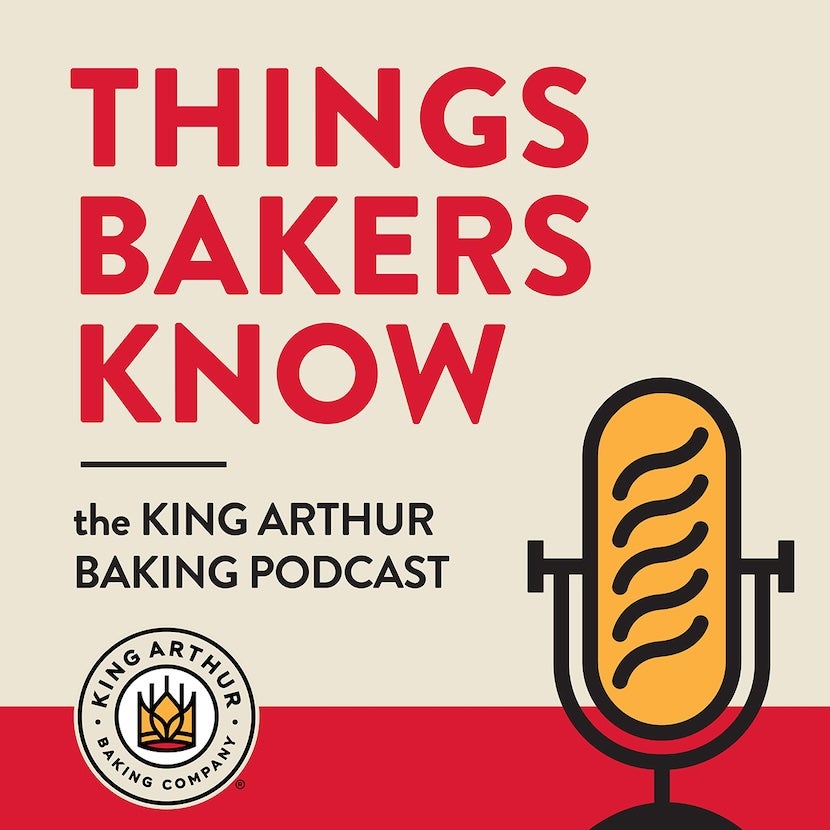
Episode Transcript
David: Every existential thought you have, you get a punch card. Oh my god.
Jessica: You would've been living at the Hut.
David: Six-inch pizzas, breakfast, lunch, and dinner
Theme song in
David: From King Arthur Baking Company, this is Things Bakers Know. I'm David Tamarkin, King Arthur's Editorial Director.
Jessica: And I'm Jessica Battilana, Staff Editor at King Arthur Baking. Today we are talking about a topic that is very near and dear to our hearts ... pizza.
Theme song out
Jessica: You know, you and I have been talking a lot about pizza in recent weeks.
David: I feel like you and I have been talking about pizza nonstop for the last year. 'Cause we have actually.
Jessica: And you know, all of this conversation about pizza is in service of a project that we've been working on, which is a new pizza cookbook, which will be coming out spring of 2026.
But all this conversation about pizza has definitely sent me down a sort of nostalgic road. And you know, one of the first pizzas that I really remember eating was cheese pizza from Pizza Hut. And I grew up in rural Vermont and going to Pizza Hut, it required a trip across state lines because the only Pizza Hut was across the river in New Hampshire.
And it was a big deal. Like it felt sort of fancy there. You know, they had the faux Tiffany lanterns. The dark red leather banquettes and those giant 20-ounce red plastic tumblers. I mean, we didn't dress up for it, but we could have. It was that significant.
David: Totally. They were sort dark and like dark, moody, very moody.
Jessica: The reason that we went is because my brother and I, and later my sister, who's five years younger than me, participated in the Book It program.
David: Mm.
Jessica: Do you know Book It? Is that ringing any bells?
David: Well, uh, it's, it's, it's bringing up trauma. Yeah.
Jessica: Well, if you're not familiar with Book It, this was a literacy program. It started about 40 years ago, and you would get a punch card and for every book you'd read you'd get a punch on your punch card. And once your punch card was filled, you could turn it in for a free six-inch personal pan pizza.
David: It's a good reward.
Jessica: I mean, for a nerd like me who spent most of her time in the library, I loved to read. I had few friends. I loved pizza. I mean, it was basically, the Book It was designed for rural nerds like me, and I filled out those punch cards like nobody's business.
David: Okay. But did you ever lie though? Like did you really read all the books?
Jessica: I read all the books. Did you not read the books?
David: Well, I mean, I, yeah, I didn't read any books and I, and I, but I didn't lie either. Like I didn't, I never ...
Jessica: You didn't do Book It.
David: It was no point. I mean, it would be like, you know, if you get a punch for every time you have existential thoughts as a five-year-old, I would've killed it. Every, every existential thought you have, you get a punch card. Oh my god.
Jessica: You would've been living at the Hut.
David: Six-inch pizzas breakfast, lunch, and dinner. No, but I'm happy for you though. I love that you have these good memories of childhood.
Jessica: I do, I do. And I, I remember the pizza also just so well, it, it was, you know, the sauce is really sweet.
David: It's good.
Jessica: There was a lot of cheese, generously applied cheese.
David: Mm-hmm.
Jessica: I'd have that tumbler of root beer, like life was good.
David: It sounds like an ideal meal, honestly.
Jessica: And you know, whether or not it's a Pizza Hut memory, I think like a lot of our listeners can probably relate to those early, like starry-eyed pizza memories, whether it was at the brightly lit pizza parlor in the suburbs, you know, the ones that always sponsor, like the little league teams. Or for kids that grew up in the city like a slice at an iconic New York City slice shop, which I didn't have until I was in college, you know? But is where I imagine New York toddlers take, like their first bite of solid food is at these slice shops, right?
David: Yeah. Like, or like anywhere. I mean, you just, don't go to a slice shop at 3:00 PM, like it's packed with kids getting their afterschool slice, which of course I fully support.
Jessica: Totally. I mean, or like the basement sleepovers where we scarf down slices of takeout pizza. Like I think that pizza is one of, it's one of our first foods and thus we have a lot of strong associations with it. And pizza, I feel like it sort of grows with us. You start off with these afterschool slices or the sleepover pizzas or the Book It pizzas, but before you know it, we're like dropping $25 on a Neapolitan pie in a moody restaurant, drinking natural wine out of a Mason jar. And even when it's bad, you know, it's still kind of good. But lately I think it's gotten very, very good.
David: And part of the reason home pizza making has gotten so good is because people have leveled up their equipment, which is to say a lot of people bought pizza ovens.
There are so many options now for pizza ovens, high heat pizza ovens that really change the game for making pizza at home. And having a high heat pizza oven at home means that it hugely expands the type of pizza you can make. You can still do pan pizzas, which I've always considered to be the home friendliest pizza. And you know, you can still do those in a high heat oven, but you can also do super thin crust pizzas and get them truly crisp. And you can even do Neapolitan style pizza, which historically has been almost impossible to achieve at home.
Jessica: Well, you know, I have thoughts about this. I mean, Neapolitan pizza's over, David. It's over.
David: That's it. Goodbye Italy.
Jessica: I mean, of course I'm exaggerating. Neapolitan pizza is one of the greatest pizza styles in the world, and it's not going away. But for a long time, home bakers were solely trying to crack the code on making that style of pizza at home. And now I think they're broadening their scope to include other styles they're excited about, including thin crust pizzas. You know, Americans love crispy things, so it's not surprising to me exactly that we've come back around to crispy pizza.
David: Totally. So the American palette just wants crispier and crispier things. And I think that really speaks to where we are right now with home baking, with making pizza at home in American kitchens.
You know, you were talking about your pizza memories of the eighties and when I think about pizza in the nineties, I think the innovation there was really, in California, we thought about California pizza. And all the, it was all about what was going on top of the pizza. You know, the idea that like you could put creme fraiche and smoked salmon on a pizza was very new and very exciting. And —
Jessica: God, I remember the first time I had chicken on top of a pizza.
David: Oh yeah. Barbecue chicken. Yeah, right, Exactly. It was wild. Those were wild days with toppings. But now we're sort of past that. I think nobody blinks an eye. You put anything on a pizza. It's, it's all good.
I think we're now back to a place where it's all about the dough. Pizza is as much, if not more so about the dough because it's just bread. And what distinguishes great pizza is the crust and how it's baked. The mouthfeel of it. How oily is it? How crispy is it, how soft is it? But that's also where the challenge is, because it can be hard to nail those different types of crust at home.
Jessica: Well, it's sort of interesting to me to think about during the pandemic, we saw this huge bread baking renaissance. People were making sourdough at home, and I think it was like around that same time, you know, when people were stuck at home, that everyone got these pizza ovens, right? So they could justify spending the money on a home pizza oven 'cause they weren't going out as much. And then I, so I think those two things sort of like rose at the same time. It was like people were making bread. They were thinking about how dough is made. Then they got these pizza ovens and now you sort of see this overlay of like, okay, what is pizza? It's great bread with stuff on top.
David: Right? You see the connection of how treating your dough, how nurturing a dough leads to great pizza.
Jessica: Oh, nurturing, that's nice.
David: Isn't that sweet? See, I can be a parent too.
Jessica: I would love to hear from you like what you think is happening pizza-wise right now, or if you're just, you know, I mean I maybe you just totally agree with me and there's nothing more to discuss.
David: That's it, show's over! I agree with you that the Neapolitan trend is over, and what I think is coming, and already here in a lot of places, is the rise of the Midwestern-style pizza. We're talking about Midwestern tavern-style pizza. So as a Midwesterner, Great Lakes tavern-style pizza has always been a thing, and now the rest of the country is getting hip to it. But it's not just the Great Lakes tavern-style pizza that I think is coming up. It's also the super thin, crispy Roman-style pizza that's coming up.
Jessica: Yeah.
David: And they're, they're not exactly the same, but they're in the same family because they're super thin. You can eat an entire pizza and like still go for more. I know, I've done it. And there's something really just really great about this style of pizza. There's something so light about it. It's almost like eating, it's not like eating a potato chip, but it's not, not like eating a potato chip because it's like just that thin and crispy and it doesn't, it doesn't bog you down the same way. And it's like, it's just a change of pace for pizza. It aligns with your take, Jessica, because I think what we're both saying is that the drippy tip pizza, like the soupy pizzas are out and pizzas with no dip tips are in.
Jessica: No dip tips. I love that. So that just is like, when you're holding up a slice about to cram it in your mouth rather than the tip of the slice dripping down and staining your shirt, happened to me many times. You know, it stays stiff and solid. So you, when you bite into it, you're just like, crunching in.
David: Yeah. When you can hold a slice of pizza and it's as stiff as cardboard. You know, or maybe not quite that stiff. I mean, that'd be great, but like, but, but it generally, it doesn't, there's no slope, there's no downward slope. The cheese isn't dripping off. Then you have a no dip tip slice of pizza, which really just means you have a crisp pizza, a pizza that when you bite into it, it's gonna have a little bit of crunch.
Jessica: Yeah. And I think, well, I'm always excited to be talking about pizza, but today I'm also excited because we have an actual expert to talk to. Dan Richer from Razza Pizzeria in New Jersey. And Dan is also a proponent of the no dip tip.
David: Which is a big deal because Dan is really considered one of the leading pizza voices in the country. So if he's saying that no dip tip is in, it's in.
Jessica: It's in. And there is no one more detail-oriented about making pizza at home than Dan. He wrote the New York Times bestseller, The Joy of Pizza, and that book delves so deeply into every aspect. I mean, there are graphs, there are charts, like he has thought —
David: There's homework, in this book. It feels like I'm in school again.
Theme Music Sting
Jessica: Dan, thank you so much for joining us.
Dan: Thanks for having me. I'm happy to be here.
Jessica: I think one of the pain points for a lot of people baking at home is figuring out how to make their home oven behave the way a pizza oven behaves. And I'd love to hear what you think is the best kind of home oven setup.
Dan: So the oven has, it has always been a challenge. It's kind of a round peg, square hole type thing. The home oven is highly inefficient. It doesn't hold heat very well, which makes it safer for your kitchen. Home ovens don't bake hotter than five hundred fifty degrees, if you're lucky. And pizza ovens hover anywhere between five, six hundred degrees for New York-style pizza, much higher for Neapolitan-style pizza. So if you're trying to make Neapolitan-style pizza in a home oven, you're gonna run into some challenges because there's just not the temperatures that you would require. But the home oven is very good at staying in that four hundred and fifty, four seventy five, five hundred degree range. So making a pan pizza is really the best use for, for your home oven, um, without having to massively compromise.
Jessica: You know, you talked about this in the book, like what are you doing to your oven specifically? Like you mentioned a sort of double threat of fire brick, baking steel, baking stone. Will you describe that sort of like oven hack for us?
Dan: Yeah, so I love that. Um, lately I've just been using the pizza steel in my oven. It just lives in my oven, stays there, makes it a little bit more efficient. If you wanna add more thermal mass or a material to heat up and stay hot, uh, fire bricks are great. You can line one of your oven racks with fire bricks and then put a pizza steel on top of it or not. Home ovens are, are not very well insulated. So every time you open the door, you're losing much of the heat and pizza cooks from the top down, but also from the bottom up. To get a crispy crust, you need thermal mass. You need something that can get hot and stay hot, even after you open the oven door.
Jessica: So like a sheet pan's not gonna cut the mustard here.
Dan: Not even remotely.
Jessica: That's just making you mad.
Dan: Not even close. I've just had so many bad experiences doing that and it never works. There's not enough thermal mass in a cookie sheet that is very thin. And cookie sheets, listen, they make great cookies, right? They don't require the level of heat that a pizza does. Uh, a pizza steel or a pizza stone should be enough to bake one pizza. If you're trying to bake successive rounds of pizza, which is what we do at my house. Right. I have a wife and two kids, and we each take turns making a pizza, so my son will make a pizza. We bake it. We all eat it together. Takes about 15 minutes for us to scarf down a pizza.
Jessica: 15 minutes? You guys are very civilized. Your children are much better behaved than mine. I’m like 35 seconds to eat it.
Dan: To eat it and make the next one. The point is we want to give the oven time to regenerate its heat in the baking steel or stone.
Jessica: This is key, I think. Yes, this is key.
Dan: Yes, it is very important. People are chronically under-preheating their ovens.
Jessica: So when you first preheat your oven with the steel in it, how long do you preheat it for?
Dan: Minimum of 45 minutes. The best thing to do is turn your oven on when you take your dough out of the refrigerator.
Jessica: Okay.
Dan: So I’m turning the oven on well in advance.
Jessica: Mm-hmm.
Dan: I use the broiler in a couple different ways. Um, sometimes I'll use it in-between bakes to reheat, the pizza stone. So we take a pizza out. I know I need to close the oven and get that stone hot again. I'll flip on the broiler, and that gives that pizza stone a blast of heat.
Jessica: Meanwhile, you guys changed into their tuxedos. They're sitting down for their 30-minute one pizza.
Dan: Let's say you are the bottom of your pizza or the, the undercarriage has baked at a faster rate than the cheese has melted.
Jessica: Mm-hmm.
Dan: Throw it under the broiler. Finish up the top. If you can afford to have two pizza stones or two pizza steels, that's always best. It increases the amount of thermal mass that you have, and it increases your options, right? Baking pizza is kind of this, uh, game of strategy where you know what your, what your end product should be, how you get there, who cares how you get there? So having two pizza stones or pizza seals on two different racks gives you options. So you can start it on the top stone. And if you notice that the cheese is melting faster than the undercarriage is baking, move it to the other pizza steel that still is fully preheated from your long hour-long preheat.
Jessica: That's smart.
Dan: Every time you attempt to make pizza, you are, you have the opportunity to learn something about the flour, about your oven, about kneading, about anything. So you have to bake with your eyes wide open and constantly be thinking about it. And, and yeah, it gets addictive because like for me, when I attempt something, I want to do great. I want to succeed at what whatever I am interested in. And, uh, with pizza, the more attempts you make, the better you get at it.
Theme Music Sting
Ad Music Begins
Jessica: This episode is brought to you by the tools and ingredients you need to make your best pies, all of which are available on our website. We have double zero pizza flour, which is a huge favorite and makes the most tender pizza dough. We have pizza wheels, pizza peels, even pizza steels. And for those of you who love pan pizzas, we have Detroit-style pizza pans.
David: I love those pans. Those pans are great. And actually I love all those tools. In the course of writing the pizza book that we've been working on, we've used every single one of those things and they are all amazing.
Jessica: Find all of this and more at kingarthurbaking.com.
Ad Music Ends
Theme Music Sting
David: If you've ever struggled to stretch your crust or get a good bake on it or get it puffy enough, you know, there are a lot of opinions and resources to access for advice. I mean, Reddit alone, I’m mean, Jessica, I don’t know if you've been ...
Jessica: It's a jungle out there.
David: So we're gonna cut through the noise. It's time for Ask the Bakers. Maybe you have a baking question that's stumping you. If so, head to kingarthurbaking.com/podcast to record a voice message and we may end up using it on the show. That's kingarthurbaking.com/podcast.
Jessica: And of course, if you have a baking question that's simply cannot wait, you can always reach out to our Baker's Hotline via phone, email, or online chat. Just go to kingarthurbaking.com/bakers-hotline. That's kingarthurbaking.com/bakers-hotline. Or call us (855) 371-2253. That's 2-2-5-3 as in BAKE.
David: Now let's head into today's pizza questions. Let's do it.
Caller: I want to know how to get a crisp crust on a pizza. I've tried everything from solid pizza pans to pizza pans with holes, thinner crust, bottom rack, top rack, higher heat, everything. And more times than not, I end up with a soggy crust in the middle. I'd sure like some suggestions on how to fix that. Thank you.
Jessica: Valerie's been on a journey. She's top rack, bottom rack, high heat, low heat.
David: You know, and you gotta, you gotta experiment with, especially with pizza, you know.
Jessica: You gotta experiment. Yep. I mean it takes a little bit of effort I think to get to know your oven, but it sounds like that is maybe not the main issue. And you know, one of the things that took me a very long time to learn, maybe because I was raised on Pizza Hut pizzas, is like more toppings is not necessarily better when it comes to pizza.
David: Mm-hmm.
Jessica: And I think a common pitfall is that, well, one of two things. Folks really load up their pizza with sauce, which is wet, and toppings, which you know, both weigh down and add moisture. There's also the problem of like, what you've done or not done to your toppings before you put them on your pizza. Like if you're putting raw mushrooms, raw spinach, raw peppers. You see the theme here? Raw things. You know that will, that will then release moisture as they cook. Like that moisture has nowhere to go. It's not baking for long enough for that moisture to evaporate, and so that moisture from the vegetables just sinks in with moisture from the sauce and it sogs out your crust, particularly in the middle. So I would say, you know, if you're not already doing this to do, to just, you know, sort of apply sauce and toppings more judiciously than you think, and to give, you know, vegetables a little bit of a treatment before you put them on there.
So, sauté your peppers and onions. Sauté your mushrooms or your greens so that everything that's going on has released some moisture already, is par-cooked. And I think that will help the soggy center situation.
David: I've been waiting for you to give the official term for that soggy center.
Jessica: Oh, I didn't want to.
David: — which is so awful. I know, I know. I don't want you to either, but now I've teed you up to do it.
Jessica: You taught me it, you taught me this term.
David: Oh, it's not, it's so pleasant, but it's called, but, but once I say it, I think it'll, it'll, it'll get in people's heads and they will know to avoid this. When you have a soggy layer of crust right under your cheese and toppings, it's called a gum line. Ugh!
Jessica: A gum line.
David: So gross. Kind of like a, yeah, a gummy layer. It's really not pleasant and you really wanna do everything you can to avoid it. I think all of Jessica's, all of her suggestions are apt, but of course there's also the other side of the pizza that could be the problem. The underside of it. I mean, what you suggested covers the top of the pizza, but the underside is just as important. And this is where a baking steel or baking stone is an absolute game changer when it comes to making pizza. It gives you that heat on the bottom that transfers immediately to the bottom of your crust and gets it crispy and cooks it through. Without it, you have problems.
Jessica: I know we talked about baking stones and steels with Dan earlier, but for people who don't know, David, can you explain what they are and how to use them?
David: Yeah, so a baking steel and baking stone is just a slab of material and a baking steel is made out of steel. A baking stone is usually clay. Both are great. I prefer steel personally. It gets a little hotter, but either is great and what you do is you put this material in your oven and you preheat your oven. Our rule of thumb when making pizza is that you preheat 45 minutes to an hour. Um, and in that time, by the way, you could also prep some of the ingredients, like Jessica was saying, you could put some vegetables in there to roast them and, you know, get them all softened charred and release some of that water.
But you heat up your pizza stone for 45 minutes to an hour, get it ripping hot. If you have an infrared thermometer, it's a great place to use it. You wanna look for a pizza stone that's about 500 degrees. And then you slide your pizza on top of it. You can put the pizza right on top of it. You can have a layer of parchment in between, or you can use one of those pizza pans that I know you love Jessica.
Jessica: And I think that that bottom heat right away will really help. And then if you find, you know, you get your bottom as brown as you want it to be. And if your toppings are still a little pale, you can always just pop it under the broiler for a minute or two. Mm-hmm. So, you know, you can do like dual sort of, dual heat sources to achieve that perfect bake.
David: Yeah. Valerie, you know, she was talking about you know, trying out different positions in her oven. I don't know if she was talking about trying out different positions during the same bake, but that is a very good tactic. You know what you're saying, to start in the middle of your oven on a pizza stone and steel, and then moving it up. Oh, you know, you know, starting at the bottom of your oven where the heat source is, getting it crisp and then moving it up to the broiler where, so you get the top heat.
You really, this is why our colleague Martin Philip always says baking pizza is really like cooking because you really have, it's very active. You have to be there, same way that you'd like tend to a skillet of onions when you're like sauteing them. You gotta tend to your pizza and move it around to get the right heat at the right time.
Jessica: Great. Well, I hope that helps, Valerie. Good luck to you.
Caller: Hi King Arthur. So whenever I'm trying to load my pizza into the oven, it either sticks to my pizza peel or it crumples into a blob and kind of becomes a huge mess. Um, I was hoping if you could give me any advice on how to get my pizza into the oven intact. Thank you.
David: This is classic.
Jessica: This is, I mean, I was waiting for somebody to ask this question 'cause this is like the, it's the curse of the amoeba pizza. You know, it's, everything's well and good. You have your nice round pizza on your pizza peel. Then you go to put it in the oven, slide it off the peel, it sticks. It rolls upon itself. And you have like a total catastrophe. This has happened to me more times than I would like to admit.
David: Curse of the amoeba pizza. That is amazing. Yeah. Yeah. I can't wait for that movie to come out.
Jessica: Uh, I mean, I think this is one of the problems that most beginning home pizza baker's struggle with.
David: It happens all the time. Yeah, yeah. Even, even it happens to the best of us, honestly.
Jessica: This is how the calzone was born, to be honest. The calzone was an accident, I'm sure of it.
David: A mistake. Yeah. We do have some tips though. What do you do?
Jessica: Okay, so I, um, use semolina or cornmeal on my pizza peel, and then I, you know, I shape my dough most of the way on a floured surface, and when it's most of the way to the size that I want it to be, then I transfer it over to the peel, but then the clock is ticking. Like I'll finish stretching it just to get the size that I want it to be. But then it's like, you gotta go, like, then you need to top it and you need to get in the oven. And then, this just recently happened with my brother, he and I were making pizzas together and he got immediately like cracking on forming the second one. So we had one in the oven and then he started to build the second one on the pizza peel. But the one in the oven, you know, it took 10 minutes and meanwhile —
David: Yeah
Jessica: — that dough is sitting on the peel. Getting stickier and stickier.
David: It like fuses to the peel as it sits.
Jessica: And you know, I hear people say like, oh, just check if it's sticking and you can lift up the edge and throw some more semolina or cornmeal under it. Well, good luck to you. Like doing that with a pizza I think is really challenging. But you know, when inevitably it happens that your pizza rolls in on itself. I mean, if you discover it sticking before you get in the oven, like just go calzone, just fold over that dough on itself.
David: Yeah, you can save it.
Jessica: Because calzones are delicious.
David: You know, I, the truth is I never have this problem because I always use the fail-safe option. Yeah. Yeah. I'm just that good. No, I, I, it's, I'm not gonna call it a cheat, it's just, I always take the other option, which is, instead of dusting my peel with semolina, I just, I put my pizza on parchment.
Jessica: Oh yes.
David: I mean, so I, after I, you know, have my pizza stretched out and shaped, I transfer to, I put a piece of parchment on my peel and I put my pizza on that. Top it and then I cut around, I cut the parchment that's exposed off because parchment paper could burn in a 500 degree oven. Um, and then you really don't have any problem. There's no sticking there because parchment is gonna slide right off. And, um, you know, it's not what the pros do, it's not a pro move. But I'm not a pro. I'm just, I'm just a lowly home baker. And I like, I like assurance of parchment paper.
Jessica: Solid advice. I think we have one more question. Let's hear it.
Caller: What's the best way to reheat old pizza? I've heard methods where you use a frying pan, or the oven, or a toaster oven. What's the best way?
Jessica: I'm about to blow your mind.
David: Okay...
Jessica: So I, my preferred, well, first of all, there's nothing wrong with eating pizza cold outta the fridge.
David: That's what I was thinking. I was like, what's the problem here?
Jessica: One of the universe's greatest foods.
David: Let's not create more problems for ourselves. I mean, there's enough problems in the world.
Jessica: There's enough to do. There are enough problems. But if you want hot leftover pizza, first of all, never the microwave. Tragedy.
David: Yeah.
Jessica: I reheat mine, my slices in a frying pan ... wait for it ...
David: Okay.
Jessica: Cheese-side down.
David: You are lying. That's not possible. Cheese side down in a frying pan. Face down in a frying pan. Okay. What you're making is fondue.
Jessica: Because if you do just the bottom, you know, crust side down, what, what happens is like the bottom gets hot and crispy, but the top, like the cheese is still like leathery. So I start it cheese side down.
David: I don't believe this. How does this work? You put it cheese side down and all the cheese melts on the, on the pan.
Jessica: Non-stick skillet.
David: Oh my god.
Jessica: Cheese side down. Just do it at moderate heat. And then once the cheese gets warm, I just will like flip it over for just a minute. And then the bottom sort of browns in the cheese grease. Am I a genius or am I a genius?
David: Oh my gosh, so you're rendering the cheese.
Jessica: And it's perfect.
David: Like you're re-frying your pizza in cheese grease. That honestly sounds really delicious.
Jessica: It's inspired.
David: I don't believe at all that it will work, but I'm excited to, to try it.
Jessica: I want you to try it immediately and tell me what happens. But I also think, 'cause you know, the, the other pitfall of like a lot of the other methods, like if you just put it in the oven, like it becomes like a cracker, like it dries out too much. But God, I do love cold pizza.
David: Yeah, that's really the answer. Just eat it cold. We hope we helped you. If you have a question, don't forget, go to kingarthurbaking.com/podcast to record a voice message. And Jessica and I will use it to pontificate and have long conversations that have nothing to do with your question. And eventually we will get around to answering their question.
Theme Music Sting
David: Every episode we'd like to check in with Jessica to see what wildly surprising and full-throated ideas are in her head —
Jessica: Well, I'm actually, you know what? This week I'm gonna stop you there because this week ... I mean, of course I have no shortage of opinions, but I think I know that you have a full throated and wildly surprising opinion.
David: Oh god. You, you're gonna turn this around on me, okay.
Jessica: I am. Yep, I am.
David: I'm gonna get canceled for this. Um, but yeah, it's true. You know what? No, I'm gonna be proud. I'm gonna be loud and proud about this. I do have a controversial opinion about pizza that I have tried to, that has come up again and again as Jessica and our colleagues and I have been writing this pizza book, and my take is that pizza does not need cheese. And in fact, I think pizza is better —
Jessica: Oh boy.
David: Without cheese. I don't need a ton of cheese on my pizza. Like I know we started this episode talking about like cheese pizzas and how great they are. And fine, they are great, but like to me that's over. That was my childhood. I'm an adult now.
Jessica: And you want a cheese less pizza?
David: I just want a cheese less pizza. I want like, I just love, I love, I love a Rossa Pizza. Is that how you say it? Rossa? Rossa? I have no idea how you say it, but you know, like just is a pizza with a little red sauce, some anchovies. You know, put some greens on there, but I just think that when you have a pizza that's got like, that sort of reduced tomato paste-y sauce on it. It's just, it's lovely. And it's not, it's traditional. It's, it's just a long tradition of this, um, we think of pizza now as needing cheese, but it doesn't. There, I said it.
Jessica: This is perhaps the, it's perhaps the original pizza.
David: Yeah. I'm going back. Yeah. I'm just, I just have those like 1600 vibes, you know, that's who I am.
Jessica: I mean, I like a red pizza. I think you're wrong. I like cheese on my pizza. In fact, if I may counter yours, I actually prefer white pizzas to red pizzas, if we're really, really drilling down —
David: Now see, it really is a Jess-opinion. See, you had one. You pretended like you didn't have one. You said you were gonna give it to me, but now here it is.
Jessica: I just wanted to expose you.
David: You want white pizza more than like, that's your top pizza is a white pizza?
Jessica: Yeah, I mean, if I'm, yeah, if I look at a pizza menu at a pizza restaurant and I see, uh, you know, a white option ...
David: Uh huh.
Jessica: ... that's interesting, I will always get that over the red option.
David: Oh god. I don't know if you and I can eat pizza together.
Jessica: Well, maybe we can, because we're like, you know, yin and yang.
David: I think we'll end up in a place where it's like, pizza's good no matter what. It's like what you said at the beginning of the show, like there is no bad pizza.
Jessica: There's no bad pizza.
Jessica: We are out of time. Uh, but before we go, I have one question for you, David, which is, what are you baking this week?
David: This week I am baking an oversized version of a hostess cupcake, which is a recipe that our Test Kitchen came out with. I've been thinking about it ever since. It's a chocolate cake that uses a hot milk method, uh, which is exactly what it sounds like. You pour hot milk into the batter when you're making it. I tried this cake in our Test Kitchen when they were developing it and it is so good. And we've talked a lot today about the nostalgia and this is something that's very nostalgic for me. Instead of reading books and getting those Book It, you know, points I was eating hostess cupcakes.
Jessica: Man, I, I don't know. I don't know if I've ever had a hostess cupcake.
David: Oh. Wow.
Jessica: But I have had this cake, and I think that hot milk method is very interesting because, you know, you're combining your sugar and eggs and then you're heating up your milk and your fat and adding that and it results in a cake with like just a very fine texture. Like it's really tender.
David: It's really plush, I feel.
Jessica: Very plush in the way that like a, you know, a box cake is.
David: Yeah, exactly. What are you making this week?
Jessica: I mean, I guess we both have sweets on the brain and I'm going to make the peanut butter brownies.
David: Oh.
Jessica: That are on our site. You know, I did a beta test. So we have a recipe for small batch brownies, which makes a loaf pan of brownies.
David: You, you made those brownies. They were not even published when you, when you, when you made those brownies. You were so excited about that.
Jessica: I was so excited about them, and I made them. But you know what, frankly, we're not really a small batch family 'cause we ate that batch of brownies like so fast.
David: Mm-hmm.
Jessica: And I did, I took the small batch brownie recipe and I took a scaled down version of the peanut butter swirl from the peanut butter brownies, which makes a nine by thirteen. And I, so I, I made a small batch peanut butter brownie, and that was good. But like I said, we ate it immediately. And so I, now, I'm ready to commit to the full nine by thirteen. I can put some of 'em in the freezer for later. But, um, they are so delicious. So, you know, I don't mind having a big batch of those kicking around.
David: Peanut butter is close to pizza for me as a perfect food.
Jessica: Ugh, agreed. On that we can agree.
David: Finally!
Jessica: Finally, something we can agree on. Well, that does it for us today. Thank you so much for tuning in and joining us here on Things Bakers Know.
David: Remember to like and subscribe on Apple Podcasts, Spotify, Amazon Music, or wherever you get your podcasts.
Jessica: And leave us a review while you're there, or share this episode with a friend.
David: We'll see you back here next week. In the meantime, people don't forget, please just follow the recipe. Follow the recipe! Come on.
Things Bakers Know is hosted and executive produced by me, David Tamarkin,
Jessica: And me, Jessica Battilana.
David: Rossi Anastopoulo is our senior producer, Chad Chenail is our producer and engineer. Original music by Megan and Marcus Bagala.
Jessica: You'll find some of our favorite pizza recipes, as well as other recipes for what we're baking this week in the show notes. This episode featured Dan Richer author of New York Times bestseller The Joy of Pizza.
He's also the owner of Razza in New Jersey, and you can learn more about his book by going to thejoyofpizzabook.com, and it's also linked in the show notes.
David: Things Bakers Know is a King Arthur Baking Company podcast.
